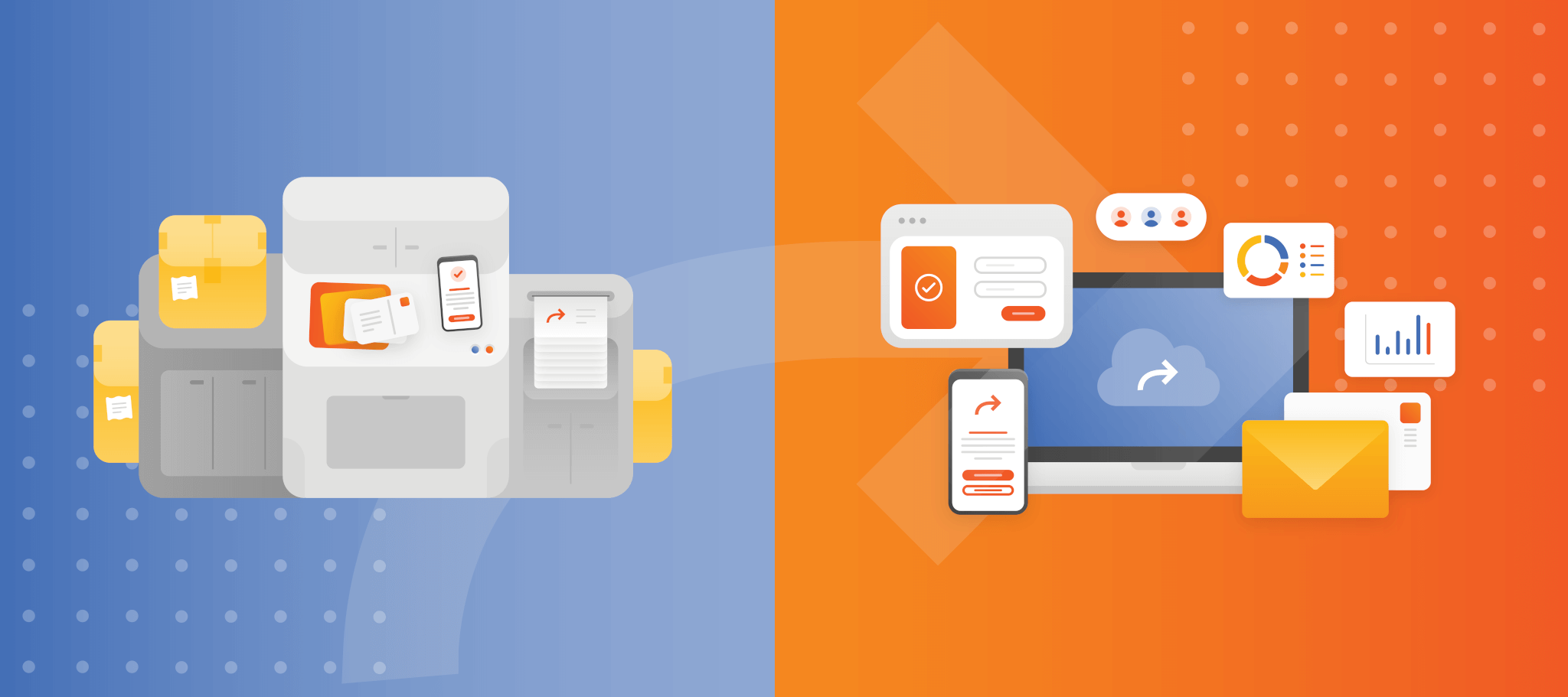
Four Trust-Building Truths to Print and Digital Integration
It seems as if some forms of marketing have always been at war, or at least a crossroads.
Whether we’re talking about radio and television, magazine and blog, or billboard and banner ad, the ways we reach out to our audiences are constantly and consistently evolving. In sweeping terms, perhaps the most obvious war/crossroads we’ve seen has been print to digital.
Or at least it appeared that way.
Today, we understand a new truth about the relationship between print and digital: there is no war between print and digital.
More and more, we’re seeing how print can become a vehicle for digital in clever and intuitive ways. Combining print and digital can also work to build trust, relationships, and make your content more accessible for a range of consumers.
Here’s why:
User Friendly
When it comes to jumping from print to digital, one of the biggest hurdles has always been the inherent complexity of navigating the jump — what may be simple for one person may be incredibly difficult for another.
Lately, we’re opening up new doors for people to use complex technology with limited technological understanding, making this hurdle easier to jump than ever before. The ease of scanning a QR code with your phone’s camera or using applications like Apple Pay are two great examples of this.
Trust Issues: Have Your Cake and Eat It Too
The early days of the internet were a little bit of a Wild West, and even today, there is no shortage of scammers, cons, and grifters waiting to take advantage of the unassuming user surfing the web.
Given this reality, it’s unsurprising that many people (particularly those belonging to older demographics) generally distrust information they get from the internet. So how do you target demographics that demand complex information, yet don’t respond to advertising via the internet?
By merging traditional and digital, we can approach wary consumers with a medium they trust — print — and incorporate a bridge to digital marketing by way of near-field communication or a PURL, for example.
Let the print earn their trust and let digital seal the deal.
A Google Maps for Your Consumer
One of the obvious hang-ups in the early days of digital via traditional marketing was user error.
Sure, you could include a URL to your website printed clearly smack in the middle of your marketing material, but this leaves you open to two problems:
The first problem is that it leaves the door open for user error. For example, misspelling a URL in their own browser can easily result in frustration and a loss of interest, which leads to consumers abandoning their search.
The second problem comes even when a consumer gets to your site: it isn’t easily navigable, allowing the consumer to effortlessly find exactly what they were looking for, again resulting in frustration and loss of interest.
By employing effective, guaranteed transitions between print and digital, the consumer will be taken to exactly the right place, every time — as quickly as possible.
In an economy where the most valuable asset is an audience’s attention, capitalizing on the ability to instantaneously direct your consumer precisely where they want to go is invaluable.
The Power of Personalization
They say one of the most powerful ways to gain someone’s confidence is using their name. This idea also applies to marketing and it’s what makes personalization such a powerful tool.
Although marketers have been using personalization for decades before digital advertising even existed, the problem was that it only was able to go so far — maybe a personalized letterhead or the insertion of a name within generic content.
Eventually, this started to become a hollow gesture. Why? Because everyone was doing it. Personalization became very impersonal.
By working together, print and digital marketing take personalization to wildly effective new heights. In personalizing direct mail by attaching a QR code that navigates the user to a PURL, we have an incredibly efficient and impactful tool that says, “we’re not just trying to flatter you by using your name, we’ve put in the effort to truly understand your needs — here’s the proof.”
Try doing that with print alone.
Marketers running edgy, futurist blogs, the media, and industry talking heads sure do love to put print and digital at odds, and the appeal of that war is obvious.
While it makes for interesting blog fodder, it remains untrue.
The fact is, print and digital not only co-exist, but when working in harmony, can become the most effective tool in your marketing arsenal. In merging print and digital, you can convey complex information, build trust, and establish better connections in user-friendly, intuitive ways.
There are no wars between print and digital — only allies.
Are you ready to move forward with merging print with digital for higher impact marketing? Contact us to see what Strata can do for you.
Back to Blog

